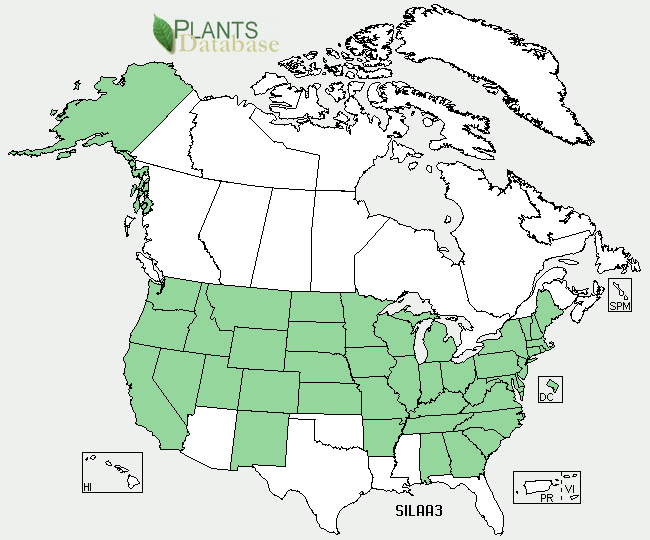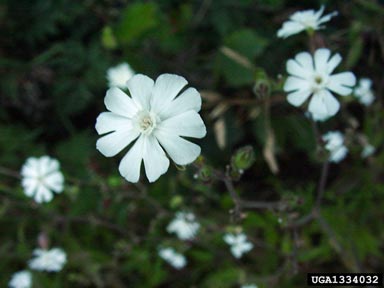Habitat
 Where
to find Silene latifolia
Where
to find Silene latifolia
Silene latifolia
can be prominently found in North America as well as Europe. It
grows best in disturbed habitats and lowlands/grasslands. For
instance, it grows on the side of the road and in fields (Brandeis,
2004). It
grows well in dry and sunny climates. Silene
latifolia is common in the
northern states of America, even found in parts of Alaska as a
biannual plant. The
map depicts the states in North America, which have reported sightings of
Silene latifolia (USDA,
2013).
A closer look: Details on habitat
Even though Silene latifolia grows well in dry and sunny
climates, it has been known to grow in almost every state of the
United States and in Europe revealing it does not have a very specialized
habitat or specifically grow in the southern states (Ripperton,
2006). Another sign that Silene latifolia does not
have a specific habitat is the plant is eaten by both generalized and specialized species (Bucheli et al., 2001).
Learn more about the
different organisms that interact with Silene latifolia
on the interactions page.
The habitats it can live in can be extreme ones because of the
natural selection process that advanced the plants’ reproductive
and growth systems (Zluvoria et
al., 2010). To learn more about the advancements
of Silene latifolia, check out the
adaptations page.
 Invasive species in North America: What does that mean?
Invasive species in North America: What does that mean?
Silene latifolia has been known as an invasive species in North America
since it was brought over from Europe about 200 years ago.
Speculation on its arrival suggests that it may have been
brought over by ship parts. The invasive species has transformed
into a “weedy Phenotype.” This invasive species has a higher
susceptibility to infection, predation, and aphid infestation,
but it also has a higher reproductive potential. Even though its susceptibility is increased, the habitat populations have
a higher performance in North America (Bucheli, 2001;
Blaire and Wolfe,
2004).
Check out the
United States Department of Agriculture for more information
on Silene latifolia and other plants.